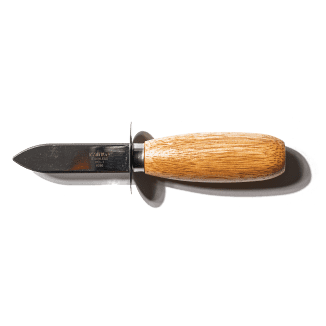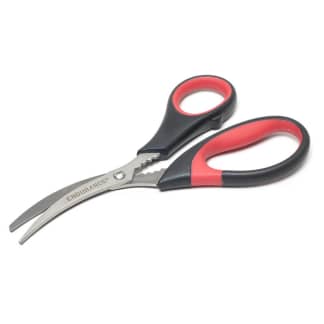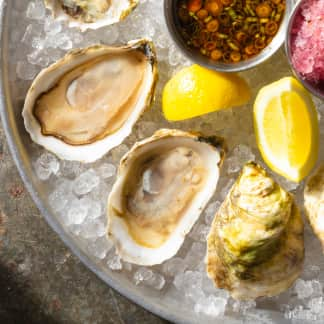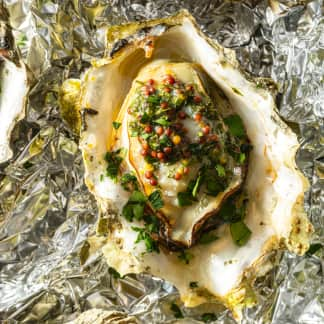The best oyster knives make it easy to open oysters of any size, sporting relatively short, narrow blades with pointy tips and grippy handles. Our favorite is the R. Murphy Knives New Haven Shucker. Its light weight and recycled plastic handle make it comfortable for hands of all sizes to hold, and it has an upturned tip that provides extra leverage for popping open oysters. We also love the F. Dick Oyster Opener. It’s got a thin, pointy, extremely sharp blade that experienced shuckers found especially adept at opening oysters and cutting them free. The OXO Good Grips Oyster Knife is our Best Buy. It’s got a slightly longer blade and a thicker handle that some users felt wasn’t quite as comfortable to grip as our top choice, but it did a great job of shucking oysters of all sizes.

You could wait for a night out to enjoy the briny pleasure of a fresh raw oyster. But there are benefits to learning to shuck oysters yourself. As writer and oyster evangelist Rowan Jacobsen told us: “Suddenly, your world opens up. You’re no longer at the mercy of restaurants charging you $4 or $5 each, and you get to be the life of the party. A little investment in time gives you the opportunity to have lots of great experiences and to save a bunch of money.”
If you’re careful, you could use a butter knife or even a screwdriver to shuck an oyster. But a dedicated oyster knife makes it a lot easier to pop open an oyster shell without making a mess or mauling the mollusk inside.
Follow These Four Steps to Successfully (and Safely) Shuck Any Oyster
Don’t let fear of shucking keep you from enjoying oysters on the half shell at home.There are many types of oyster knives: Boston, New Haven, Galveston, Providence, West Coast, French, and various Japanese options, among others. In theory, the name of the knife clues you in to the type of oyster it’s best at shucking. Big Gulf oysters benefit from a Galveston knife. For smaller oysters from Duxbury, Massachusetts, grab a Duxbury knife. But it’s not practical for most of us to have a knife for every type of oyster we might encounter. To find the best all-purpose option, we tested a variety of knives, using them to shuck oysters both tiny and extra-large, West Coast and East Coast, and everything in between.

The good news? While certain knives did work better on certain types of oysters, all the knives we tested can be used to shuck any oyster if you have a little experience. While the personal preferences of our testers varied a bit, we found that a few general characteristics made some knives more durable, more comfortable to hold, and better at shucking a wide range of oysters.
What to Look For
- A Pointy Tip: Knives with pointy tips easily slipped into even the tightest oyster hinges. While blades with broader, rounder tips are supposedly better for shucking oysters through the side, they made us feel as if we were shucking oysters with a spoon when going in through the hinge—they were clumsy and imprecise.

- Relatively Short Blade: As a rule, the bigger the oyster, the longer blade you want. Longer blades provide more leverage for popping open big, tough-shelled oysters and are better able to sweep across wider shells and slice through the top adductor muscle—a boon for handling larger oysters, as we saw in testing. But, as Jacobsen told us, most of the oysters on the market today are relatively small—less than 3 inches in diameter. You don’t need an especially long blade for these. In fact, we found that longer blades felt clumsier and harder to control with most oysters, making us worry that we might slip and stab our hands. We think knives with blades that are 2.5 to 3 inches long are best for most people, with the sweet spot falling in the middle of that range. These were big enough to handle even oysters slightly larger than 3 inches but still gave us plenty of control over our movements. If you shuck a lot of Gulf oysters, of course, you might want to go longer.
- Fairly Thin Blade: Moderately thin blades were durable and excelled at shimmying between the two halves of the oyster without breaking the shell, as thicker blades sometimes did. The very thinnest blades slipped between the shells even more easily, but they were prone to getting damaged, chipping over extended use. (Professional shuckers warned us that the blades themselves might also snap off during use, though this didn’t happen with any of the knives we tested.)

- Narrow Blade: We also preferred blades that were fairly narrow. Wider blades provided a bit more leverage for popping the oysters open, requiring less effort to use. But they were harder to insert into the oyster. By contrast, very narrow blades slipped into the oyster easily but didn’t provide as much leverage. The best blades hit a happy medium, with a width of about half an inch.
The Ultimate Guide to Enjoying Oysters at Home
How to buy, store, shuck, serve—and eat—our favorite bivalves- A Relatively Long, Grippy Handle: Handles measuring 4 inches long were comfortable for hands of all sizes to hold. We slightly preferred those made from textured plastic, which helped us maintain our grip even when our hands were wet. While wood handles can be equally grippy, they can crack or discolor from repeat exposure to oyster brine. If you do choose a model with a wood handle, we recommend oiling it periodically to help keep it intact.

Other Considerations
- Bent versus Flat Tips: The type of tip a knife has can bring trade-offs. New Haven–style knives have bent or upturned tips; these provide extra leverage for popping open the oyster once inserted into the hinge. The bent tip also hugs the curve of the shell when you’re slicing through the bottom adductor muscle, making it easier to get a clean cut. But that bent tip can get in the way as you sweep across the top shell to sever the adductor muscle there. The flat blades found on other knife types, by contrast, are easier to insert at different angles and better at severing the top adductor muscle, though they can be a little less precise for severing the bottom one. One style isn’t necessarily better than the other; our testers’ preferences split evenly between flat and upturned tips.

- Unsharpened versus Sharpened Blades: Most oyster knives aren’t sharpened. You actually don’t need a very sharp blade to sever the adductor muscles, and that dullness makes the knife safer to use when jimmying the oyster open—if the knife slips, you’re less likely to cut yourself. We think an unsharpened knife is best for most users, and particularly for beginners. French and some Japanese-style oyster knives, however, are often highly sharpened. While their keen, pointy blades can be intimidating, some testers prefer them, as they slice adductor muscles especially cleanly. The downside? Because the blade edges are so thin and sharp, they’re more prone to chipping or folding over as they repeatedly make contact with hard oyster shells. If you’re a more experienced oyster shucker and don’t mind sharpening your blade from time to time, you might enjoy the extra finesse that a French or Japanese knife offers.

- Weight: Testers were divided when it came to the weight of the knives. Some preferred lighter-weight versions weighing about 2 ounces, as they felt particularly effortless to hold for long stints. Others liked heavier models weighing up to 3 ounces; these felt more solidly built and durable in hand. We’ve provided weights in the chart to help you decide which you prefer.
The Tests
- Shuck 10 medium oysters with each knife
- Shuck 3 tiny oysters with each knife
- Shuck 3 extra-large oysters with each knife
- Winner only: Shuck 25 extra medium oysters
- Submerge in brine solution for an hour, dry overnight, inspect for damage
- Have 5 users of varying skill levels and dominant hands use each knife to shuck oysters
How We Rated
- Blade: We rated the knives on how well the blades shucked oysters of different types.
- Handle: We rated the knives on how comfortable their handles were to grip.
- Durability: We rated the knives on how well they withstood damage.
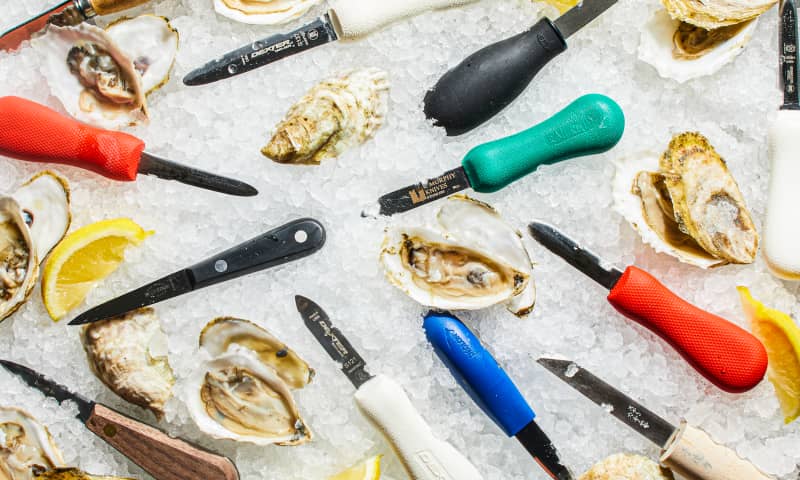
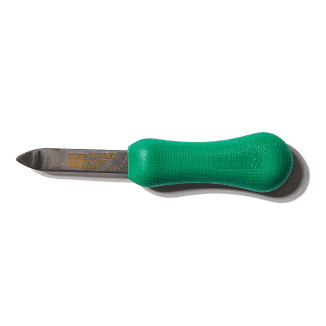
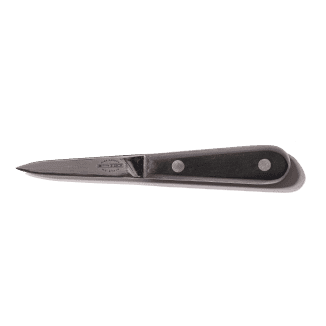
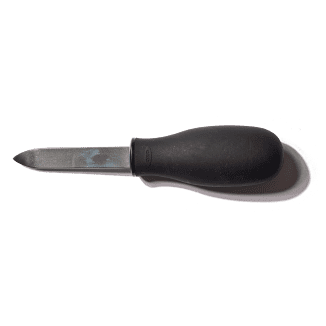



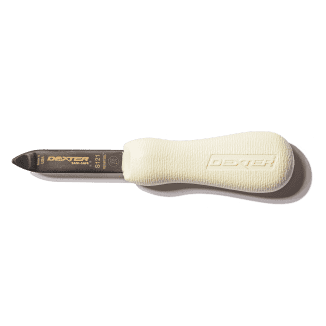
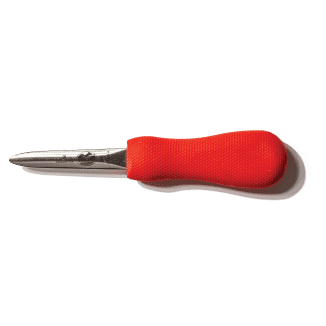
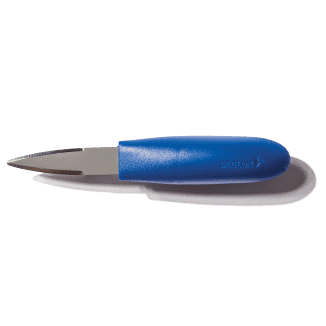
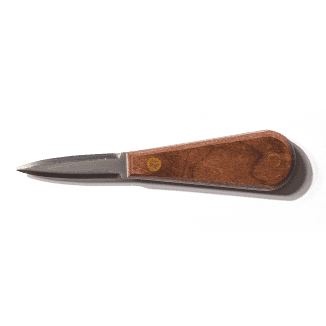
 Buy at Made In Cookware
Buy at Made In Cookware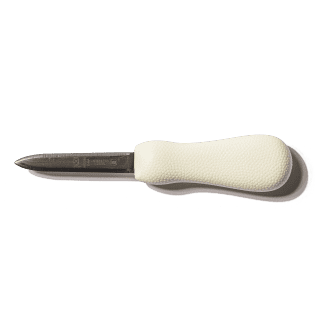
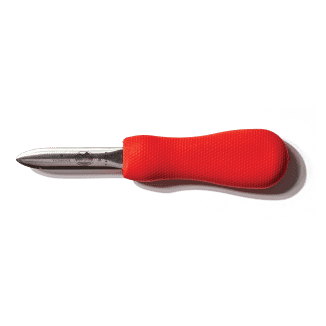
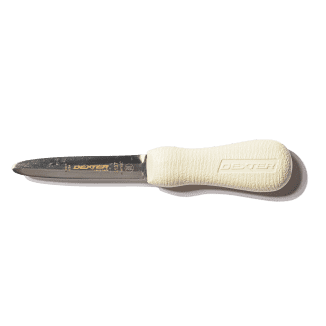
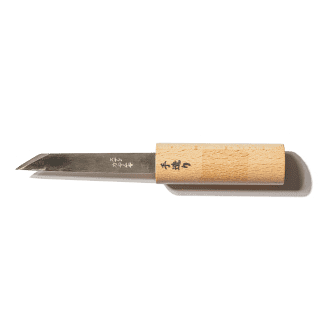
 Buy at Korin
Buy at Korin